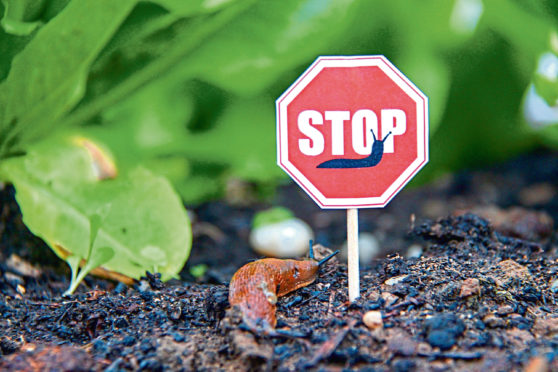
When a whole tray of lettuce seedlings disappear overnight, it’s a sign that slugs are on the move.
These are at their most active during spells of damp weather and they like nothing better than to nibble on young salad leaves.
But they are no means the only pests that can ruin crops, in fact there’s a whole army of them including woodlice, cutworms and chafer grubs.
And then there’s the airborne division, made up of carrot fly, aphids and cabbage white butterflies, the caterpillars of which can shred a row of brassicas into lace doilies.
Until relatively recently, the gardener had an arsenal of sprays and poisons with which to fight back and defend their crops. But now the chemical options are limited and vegetable growers have had to adapt, using cultural methods to reduce predation by bugs, slugs and other creepy-crawlies.
Some, such as cutworms, chafer grubs, cabbage root fly and vine weevil can be tackled using nematodes, tiny living organisms that burrow into the skin of their hosts, killing them in the process. These need to be applied during warm weather to be effective and they can be costly to use.
Carrot fly can by defeated by growing crops at least 60cm above ground level, too high to be reached by these low-flyers, or by covering carrots with fleece.
Aphids can be squashed before a small break-out turns into an infestation, and most gardeners have a favourite method for tackling slugs – from beer traps and grit barriers, to rows of copper coins glued around containers to deter slugs slithering across them.
An outbreak of red spider mite can cause havoc among greenhouse crops and while there are both biological and chemical controls, the best solution is to clean the greenhouse thoroughly before the growing season and then to keep the atmosphere moist, as spider mite thrive in warm, dry conditions.
If you do use chemicals for any infestation, then read the label on the product very clearly first and follow the instructions to the letter.
And remember that what may seem like a pest to you may be an important food source for birds, hedgehogs and other garden visitors.
So tread lightly, don’t aim for total eradication but instead adopt a more harmonious approach.
And if slugs nibble the outer leaves of your lettuce, remember – it’s good to share.

Enjoy the convenience of having The Sunday Post delivered as a digital ePaper straight to your smartphone, tablet or computer.
Subscribe for only £5.49 a month and enjoy all the benefits of the printed paper as a digital replica.
Subscribe